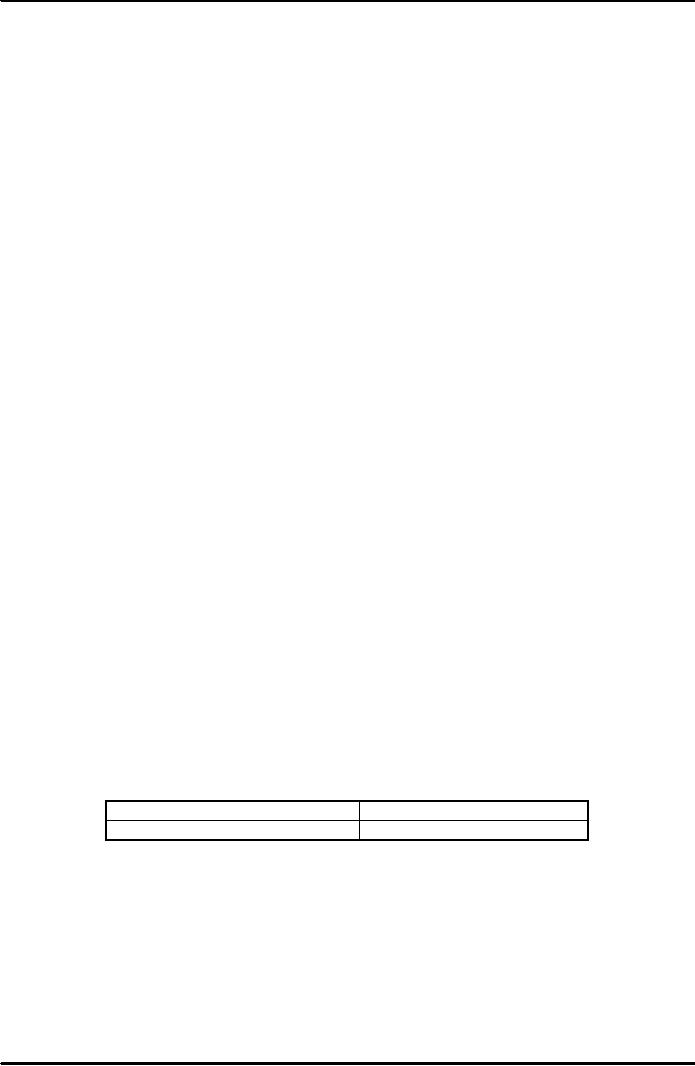 |
MONEY:Money Supply, Fractional Reserve Banking, |
| << INVESTMENT (Continued…):Inventories and the Real Interest Rate |
| MONEY (Continued…):Three Instruments of Money Supply, Money Demand >> |

Macroeconomics
ECO 403
VU
LESSON
44
MONEY
Money
Supply
�
Earlier,
we introduced the concept of
money supply in a highly
simplified way.
�
We
defined quantity of money as
the number of rupees held by
public, and assumed
that
central
bank controls the supply of
money by increasing or decreasing
the number of
rupees
in circulation through open-market
operations.
�
Although
a good approximation, this
definition omits the role of
banking system in
determining
the money supply.
�
Here,
we'll see that the
money supply is determined
not only by the Central
Bank, but also
by
the behavior of households
(which hold money) and
banks (where money is
held).
�
Recall,
the Money supply includes
both currency in the hand of
public and deposits
at
banks
that households use on
demand for
transactions.
M=C+D
Where
M
---> Money Supply
C
---> Currency
D
---> Demand
Deposits
100%
Reserve Banking
�
Imagine
a world without banks, where
all the money takes
the form of currency, and
the
quantity
of money is simply the
amount of currency that
public holds (assume
$1,000).
�
Now
a new bank comes in and
accepts deposits but does
not make loans. Its
only purpose
is
to provide a safe place for
depositors to keep
money
The
deposits that banks have
received but have not
lent out are called
reserves.
Some
Reserves are held in the
vaults of local banks but
most are held at the
central bank.
Consider
the case where all
deposits are held as
reserves: banks accept
deposits, place the
money
in reserve, and leave the
money there until the
depositor makes a withdrawal or
writes
a
check against the
balance.
In
a 100% reserve banking
system, all deposits are
held in reserve and thus
the banking
system
does not affect the
supply of money.
�
Suppose
that households deposit the
economy's entire $1,000 in
First bank. This
bank's
balance
sheet will look
like:
Assets
Liabilities
Reserves
$1,000
Deposits
$1,000
�
The
bank is not making loans so
it is not earning profit
rather a small fee to cover
its cost.
�
The
money supply in the economy
before and after the
creation of bank remains the
same,
i.e.
$1,000. So 100% reserve
deposit does not affect
money supply in
economy
Fractional
Reserve Banking
�
Now,
if the banks start to use
some of their deposits to
make loans (e.g. to
households for
house
finance and to firms for
capital finance), they can
charge interest on the
loans.
200

Macroeconomics
ECO 403
VU
�
The
banks must keep some
reserve on hand so that
reserves are available
whenever
depositors
want to make
withdrawals.
�
As
long as the amount of new
deposits approximately equals
the amount of withdrawals,
a
bank
need not keep all
its deposits in
reserves.
�
Note:
a reserve-deposit
ratio is the
fraction of deposits kept in
reserve. Excess
reserves
are
reserves above the reserve
requirement.
�
Fractional-reserve
banking, a system
under which banks keep
only a fraction of
their
deposits
in reserve. In a system of fractional
reserve banking, banks
create money.
201
Table of Contents:
- INTRODUCTION:COURSE DESCRIPTION, TEN PRINCIPLES OF ECONOMICS
- PRINCIPLE OF MACROECONOMICS:People Face Tradeoffs
- IMPORTANCE OF MACROECONOMICS:Interest rates and rental payments
- THE DATA OF MACROECONOMICS:Rules for computing GDP
- THE DATA OF MACROECONOMICS (Continued…):Components of Expenditures
- THE DATA OF MACROECONOMICS (Continued…):How to construct the CPI
- NATIONAL INCOME: WHERE IT COMES FROM AND WHERE IT GOES
- NATIONAL INCOME: WHERE IT COMES FROM AND WHERE IT GOES (Continued…)
- NATIONAL INCOME: WHERE IT COMES FROM AND WHERE IT GOES (Continued…)
- NATIONAL INCOME: WHERE IT COMES FROM AND WHERE IT GOES (Continued…)
- MONEY AND INFLATION:The Quantity Equation, Inflation and interest rates
- MONEY AND INFLATION (Continued…):Money demand and the nominal interest rate
- MONEY AND INFLATION (Continued…):Costs of expected inflation:
- MONEY AND INFLATION (Continued…):The Classical Dichotomy
- OPEN ECONOMY:Three experiments, The nominal exchange rate
- OPEN ECONOMY (Continued…):The Determinants of the Nominal Exchange Rate
- OPEN ECONOMY (Continued…):A first model of the natural rate
- ISSUES IN UNEMPLOYMENT:Public Policy and Job Search
- ECONOMIC GROWTH:THE SOLOW MODEL, Saving and investment
- ECONOMIC GROWTH (Continued…):The Steady State
- ECONOMIC GROWTH (Continued…):The Golden Rule Capital Stock
- ECONOMIC GROWTH (Continued…):The Golden Rule, Policies to promote growth
- ECONOMIC GROWTH (Continued…):Possible problems with industrial policy
- AGGREGATE DEMAND AND AGGREGATE SUPPLY:When prices are sticky
- AGGREGATE DEMAND AND AGGREGATE SUPPLY (Continued…):
- AGGREGATE DEMAND AND AGGREGATE SUPPLY (Continued…):
- AGGREGATE DEMAND AND AGGREGATE SUPPLY (Continued…)
- AGGREGATE DEMAND AND AGGREGATE SUPPLY (Continued…)
- AGGREGATE DEMAND AND AGGREGATE SUPPLY (Continued…)
- AGGREGATE DEMAND IN THE OPEN ECONOMY:Lessons about fiscal policy
- AGGREGATE DEMAND IN THE OPEN ECONOMY(Continued…):Fixed exchange rates
- AGGREGATE DEMAND IN THE OPEN ECONOMY (Continued…):Why income might not rise
- AGGREGATE SUPPLY:The sticky-price model
- AGGREGATE SUPPLY (Continued…):Deriving the Phillips Curve from SRAS
- GOVERNMENT DEBT:Permanent Debt, Floating Debt, Unfunded Debts
- GOVERNMENT DEBT (Continued…):Starting with too little capital,
- CONSUMPTION:Secular Stagnation and Simon Kuznets
- CONSUMPTION (Continued…):Consumer Preferences, Constraints on Borrowings
- CONSUMPTION (Continued…):The Life-cycle Consumption Function
- INVESTMENT:The Rental Price of Capital, The Cost of Capital
- INVESTMENT (Continued…):The Determinants of Investment
- INVESTMENT (Continued…):Financing Constraints, Residential Investment
- INVESTMENT (Continued…):Inventories and the Real Interest Rate
- MONEY:Money Supply, Fractional Reserve Banking,
- MONEY (Continued…):Three Instruments of Money Supply, Money Demand